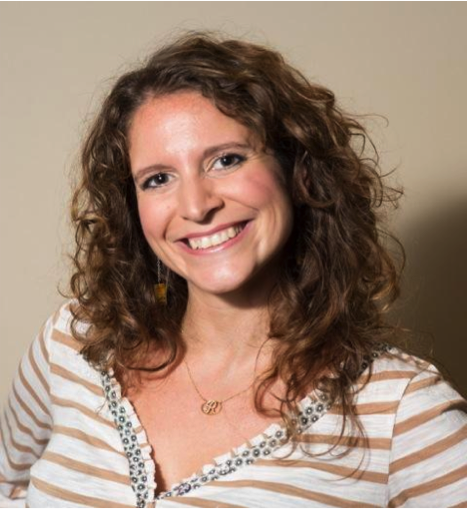Tweeting in the Real-World Spanish Class
Reyes Llopis-Garcia is a lecturer in language and the Co-Director of the Spanish Language Program at Columbia University. She has used Twitter with her foreign language students to provide real-world analysis, exposure, and reflection of Spanish. This Faculty Spotlight is an excerpt of her conversation with Sarohini Chahal, an educational technologist at CCNMTL, discussing her implementation of the tool and its outcomes.
SC: What’s your main goal when you’re teaching?
 RLG: My main goal is to provide my students a clear and operative understanding of the Spanish language at grammatical, discourse, and cultural levels. By integrating a wide variety of pedagogical approaches, I make sure to include work on reading, writing and listening, with a strong focus on peer interaction, mediation, negotiation, and collaboration skills. I am focused on content my students can relate to and technology they can easily learn and manage necessary course content.
RLG: My main goal is to provide my students a clear and operative understanding of the Spanish language at grammatical, discourse, and cultural levels. By integrating a wide variety of pedagogical approaches, I make sure to include work on reading, writing and listening, with a strong focus on peer interaction, mediation, negotiation, and collaboration skills. I am focused on content my students can relate to and technology they can easily learn and manage necessary course content.
What are your primary course objectives?
All Spanish courses taught for the language requirement at Columbia and Barnard adhere to the same guidelines for curricular design and implementation. A vital component of the curriculum is a culminating “Final Project”, for which the main goal is to enable students to gain as much first hand experience of what New York City has in terms of authentic cultural resources of a target language. Thus, my objectives are:
- Implement a social media tool to extend Spanish language discussion beyond the classroom.
- Provide access to New York City cultural resources, institutions, news, and to every day people using Spanish language.
- Foster critical analysis of academic and non-academic Spanish.
- Generate Spanish language interaction with student peer group.
- Take ownership of learning.
How explicit did you make your course project objectives?
I made it very explicit. Spring 2014 has seen the third iteration of the Twitter Project and it has evolved well with guidance from educational technologists at CCNMTL and from valuable suggestions of students. I am a firm believer in continuing to share my insights with my students so that they are aware at all times of what they’re doing, why they’re doing it, and what they should expect to learn and gain from it. The key of any successful project, I believe, is communication!
Tell me more about your course and how a Social Media tool such as Twitter plays into that.
My course is Intermediate Spanish and my students are mostly in their 3rd semester of the language study so they are at a level where they can venture from shorter sentences to more cohesive discourse levels. This course allows them to deepen their grammar usage and converse more. Twitter, the micro blogging social media tool, plays a very important role in their “transition into the conversational scope” of the Spanish language. It allows them to interact with one another, with me, and if they choose to do so, with others on using the platform without risking much linguistically, because Twitter helps keep their interactions short, simple and focused.
Has using Twitter as a language instructor made your job easier?
Yes, most definitely. The “difficulty” in language classes is rooted in students being limited by their lack of mastery of a vehicular language (Spanish), and they often find they can’t share and/or participate as much as they’d like. On Twitter they can take the time to craft what they’d like to say, and sometimes they participate far more online than they do in class.
Tell me more about your use of personal and professional uses Twitter.
I use my @rllopis_CU account to network professionally. I broadcast my academic work in the fields of Applied Linguistics, Second Language Acquisition, and Cognitive Linguistics. I also share my best teaching practices as a teacher and trainer. Additionally, I love to tweet about my two passions: yoga and running!
What are some of your best practice recommendations on implementing Twitter?
Well, here are a few: Be clear and explicit about the advantages of using the tool. Be patient because not all students may engage and participate to your objective levels right away. Use a short Twitter # hashtag to define your project and review public and private setting options with your students.
As a Co-Director of the Spanish Language Program, you also support other language instructors. Have they expressed interest in the instructional uses of social media?
My colleagues in the Spanish Language Program are incredibly inspiring educators, so their use of technology in their courses is really impressive: wikis, blogs, podcasts, videos, presentation tools, etc. In the Twitter universe, however, I am still one of the very few users. But things are changing. This Twitter Project was highlighted at my departments Applied Pedagogy professional development workshop this year which sparked great interest. I believe Fall 2014 will see it implemented across other levels and sections, which I am very excited about.
My course evaluations had a handful of students referencing the Twitter Project as being the most memorable learning experience. For example, a student wrote: "the project allowed for the co-construction of cultural reflections with my peers unlike ever before."


